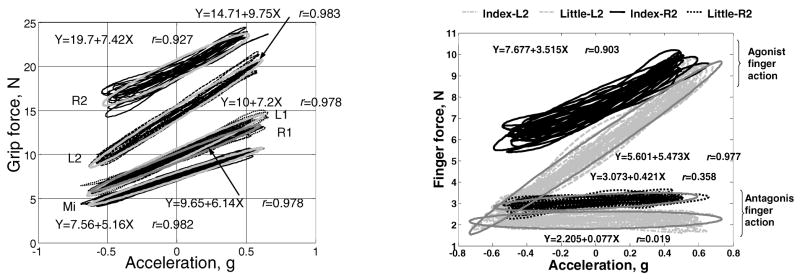Figure 26.
The dependence of the finger forces on object acceleration at different torques. Data from a representative subject are shown. Vertical oscillation of the handle, frequency 2 Hz. Left panel: the grasp force at different torques. Right panel: the index and little finger normal forces. The torques are described by the location of the object’s center of mass with respect to the grasp, Mi – middle (zero torque), R - right, L - left, 1 designates 1/6 Nm, 2 corresponds to 1/3 Nm. As an example, the symbol R2 represents the load location to the right of the center that results in the moment of −1/3 Nm. Such a moment—as seen from the subject—is in the clockwise direction (negative). To counterbalance this external moment/torque the subject should exert a counterclockwise (pronation, positive) moment of equal magnitude. Note: (1) in the left panel—the grasp force increases both with the acceleration and the torque; (2) in the right panel – when the fingers work as torque agonists the finger force increases with the acceleration; when the fingers work as torque antagonists the forces stay put. (Adapted from F. Gao, M.L. Latash, and V.M. Zatsiorsky. Maintaining rotational equilibrium during object manipulation: linear behavior of a highly non-linear system. Experimental Brain Research, 2006, 169(4):519–531).

